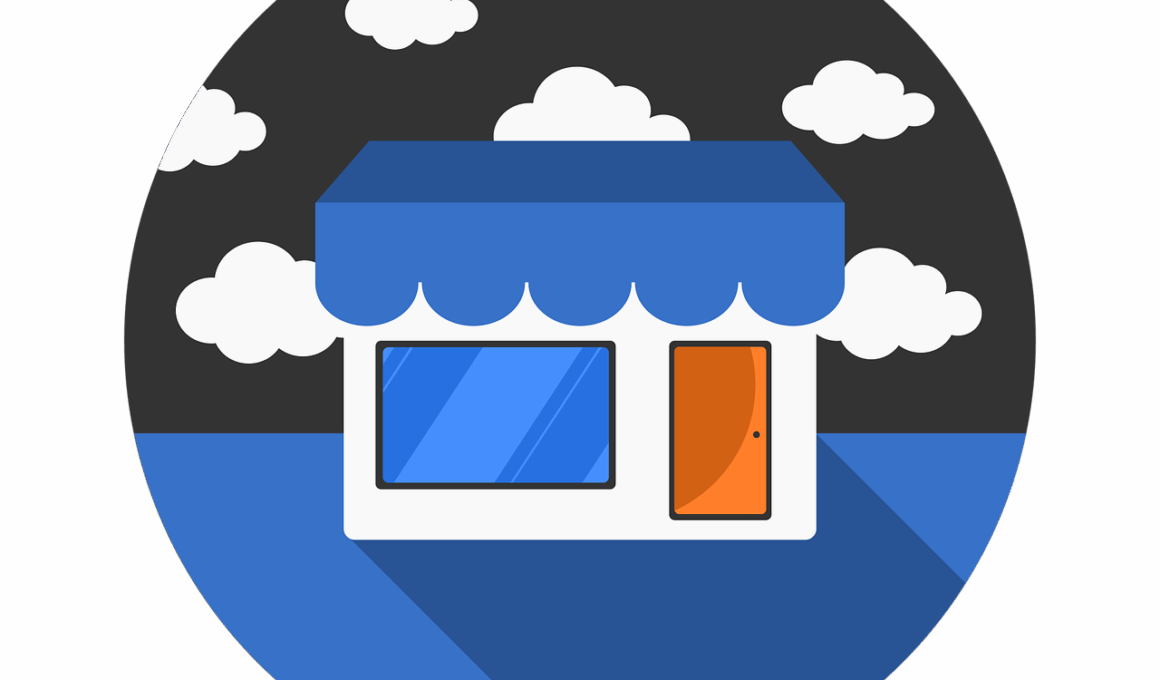How to Boost Your Sales on Retail Online Marketplaces
In today’s digital age, retail online marketplaces have become essential platforms for businesses aiming to expand their reach. These platforms provide sellers with a vast customer base, allowing them to market their products effectively. To boost your sales, it is vital to understand the intricacies of these marketplace environments. Start by analyzing your target audience to tailor your marketing strategies accordingly. Consider the demographics, preferences, and shopping behaviors of your potential customers. This information can significantly enhance your sales efforts. Utilize various tools to gather insights about your competition as well. Understanding what works and what doesn’t within your niche can inform your product selection and pricing strategy. Ensure that your product listings are optimized for search functionality, making it easier for customers to locate your offerings. Don’t forget to involve high-quality product images and informative descriptions. Additionally, keeping your inventory updated helps in rapidly meeting customer demands. A failure to manage stock levels can lead to lost sales. Employing these techniques will enhance your visibility, fostering increased sales on online retail marketplaces.
Utilizing Effective Marketing Strategies
Establishing a strong marketing strategy is crucial for driving sales in retail online marketplaces. Focus on utilizing social media channels to promote your products effectively. Share visually appealing content and engage with potential customers beyond your listings. Collaborating with influencers can also elevate your brand profile. Influencers have established trust with their audiences, which can lead to higher conversion rates. Consider using targeted advertisement campaigns to reach specific demographics on platforms like Facebook and Instagram. Additionally, invest in Search Engine Optimization (SEO) techniques to enhance your marketplace presence. This includes incorporating relevant keywords into your product titles and descriptions. Another powerful approach is email marketing, providing personalized offers to previous customers. Utilize customer feedback for improvements and highlight those testimonials in your promotions. Leverage promotional techniques, such as limited-time discounts or free shipping options, to encourage impulse buying. Combining various marketing strategies can help in maximizing your visibility, generating traffic, and increasing sales significantly. Always measure your campaign’s performance, allowing you to adapt your strategies based on customer interactions and purchasing behaviors.
Product images play a critical role in attracting customers and driving sales on retail online marketplaces. High-quality images create a professional appearance and can significantly influence purchasing decisions. Choose multiple angles to showcase your product comprehensively. To further enhance customer experience, consider using lifestyle images to illustrate how your product fits into everyday life. This approach allows potential customers to visualize the product in their lives. Similarly, including a video demonstration can also offer insight into the product’s features and benefits. Utilize image editing software to ensure that your product photos are sharp and properly lit. Monitor marketplace requirements for image specifications, ensuring compliance with their guidelines. Additionally, consider implementing user-generated content, encouraging your satisfied customers to share their experiences and images. This builds trust and social proof among potential buyers. Maintaining a consistent theme across your product images can also establish brand identity, making your offerings easily identifiable. Ultimately, investing time in optimizing your imagery is essential for engaging customers and boosting your sales on retail online marketplaces.
Customer Reviews and Feedback
Customer reviews and feedback significantly influence buying decisions in online shopping scenarios. Encourage your customers to share their experiences after making a purchase. Positive testimonials can enhance your product’s credibility, enticing new customers to buy. Make it easy for customers to leave reviews by providing follow-up emails after their purchase. Consider offering incentives, such as discounts on future purchases, in exchange for honest feedback. Addressing negative reviews promptly is crucial as well; show potential customers that you value their opinions and are committed to resolving any issues. Building strong relationships with returning customers can foster loyalty and generate repeat business. Additionally, responding to reviews, both positive and negative, showcases excellent customer service. Create a frequently asked questions (FAQ) section on your marketplace listing to address common concerns proactively. Transparency about your product offerings and associated policies can also improve customer confidence. By actively engaging with customer feedback, you demonstrate a commitment to improvement and care for customer satisfaction, ultimately leading to increased sales and a strong reputation in retail online marketplaces.
Pricing strategies are fundamental in maximizing your sales on retail online marketplaces. Conduct thorough research to determine the appropriate price points for your products based on supplier costs and industry standards. Competitive pricing can attract various customers looking for great deals. Implement psychological pricing techniques, such as setting prices slightly below a whole number, e.g., $19.99 instead of $20. This small difference can significantly impact customers’ perceptions and increase the likelihood of purchase. Offering special promotions or bundle deals can also drive sales, as customers often appreciate the perceived value in such offerings. Furthermore, analyze your competitors’ pricing strategies, ensuring your products are positioned advantageously without compromising quality or margin. Seasonal sales and clearance events can create urgency and boost inventory turnover. Use data analytics to track purchasing patterns and trends, helping you adjust prices dynamically according to demand. Always ensure transparency about your pricing model, including shipping costs and return policies. Clear, straightforward pricing fosters trust with customers and results in a positive shopping experience, thus encouraging increased sales across retail online marketplaces.
Building Brand Loyalty
Brand loyalty is a vital component of sustained sales in retail online marketplaces. Establishing a robust brand identity is essential; consider creating a unique logo, consistent color scheme, and engaging storytelling. These elements help customers form emotional connections with your brand, differentiating you from competitors. Invest in customer relationship management tools to track interactions with your shoppers. Personalizing communication can make customers feel valued. Regularly share updates about your products, offering exclusive deals to loyal customers, keeping them engaged with your brand. Hosting giveaways and contests can also build excitement around your brand and increase customer interactions. Ensure your customer service policies are user-friendly. Offering hassle-free returns and supportive customer service can reassure customers in their purchasing decisions. Engage with customers across different social media platforms by responding to inquiries and comments promptly. Organizing community events, either virtual or in-person, can foster connection and strengthen brand loyalty. Encourage customers to share their experiences on social media using branded hashtags, increasing your visibility. By creating strong brand connections, you can enhance customer retention, ultimately driving repeat sales and sustaining growth within retail online marketplaces.
Data analytics plays a crucial role in optimizing sales on retail online marketplaces. By understanding customer behavior, businesses can tailor their offerings to match preferences effectively. Utilize analytics tools to assess traffic sources, conversion rates, and customer engagement metrics. This information can inform product development decisions and marketing strategies. Segment your customer base according to their purchasing patterns and preferences, enabling targeted campaigns that resonate with diverse demographics. Adjust inventory levels based on data insights to ensure high-demand products remain available. Track competitor performance and marketplace trends to inform pricing and promotional strategies. Identify peak buying periods and customer engagement spikes to optimize ad spending. Continuously monitor marketplace guidelines and platform updates to ensure compliance. Employ A/B testing for marketing campaigns to determine effectiveness. This involves running two related campaigns simultaneously and analyzing performance metrics for better decision-making moving forward. Understanding the influence of various digital marketing channels is also essential, helping to allocate resources efficiently. By leveraging data analytics in sales strategies, you will position your business for sustained success in retail online marketplaces.


